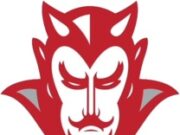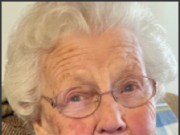Barber poles, with their swirling red, white and blue stripes, in our lifetime, have always meant a place for men to get a haircut. Did you ever wonder what is it about the red, white, and sometimes blue stripes that mean “barber”, or how that symbol came to represent the profession? In modern times, the term “barber” is used both as a professional title and to refer to hairdressers who specialize in men’s hair. But “barber” didn’t always mean that and the symbol of the barber pole came from a time when the art of hair and beard trimming, medicine, dentistry and surgery were all performed by the same person. The barber’s trade has a long history. In Egypt, razors have been found among relics from the Bronze Age (over 5500 years ago.) In ancient Egypt, barbers were highly respected. These men were the priests and men of medicine in their culture. In early tribes, it was believed that certain evil spirits were able to enter a person’s body through their hair, and that cutting it was a way to drive them out. Wherever there were legends and superstitions about the hair, barbers flourished. To this day in India, the veneration of the hair continues and those who cut and dress the hair are important in their culture.
The barber pole is actually the oldest distinguishing mark of any profession though it is not as old as the profession itself. The pole originated in the days when bloodletting (bleeding people to get rid of disease) was one of the principal duties of the barber surgeon.
Hundreds of years have passed, and the profession itself has changed, however, the symbol that represents modern barbers remains rooted in its history. There are several theories as to what the spiral ribbons painted around the pole represent. During their practice of surgery or blood-letting, barbers used two long white bandages. One was twisted around the arm before bleeding, and the other was used to bind the wound afterward. They would then rinse them out and hang the blood stained bandages on a pole in the doorway of their business to dry. The pole with the bandage became a universal sign and a sort of advertisement of the barber surgeon’s therapeutic specialty. Slowly this pole evolved into a painted imitation and given a permanent place on the outside of the shop.
In England and Europe where a red and white pole is used, the red represents blood and white, the bandages. In the United States, where a red, white, and blue pole is common, it is thought that the red and blue stand for arterial and venous blood, and white, the bandages. The finial on the top of the modern pole represents the basin that was used for leeches as well as the blood collecting.
Until around 1461, barbers were the only persons practicing surgery. As the science of medicine, surgery and dentistry advanced, barbers became less and less capable of performing the triple functions of barber-surgeon-dentist. By the end of the 18th century, there was a complete split in the profession and surgeon became its own profession with a distinct educational track.
The next hundred years marked a decline of the barber profession. After barbers were prohibited from practicing medicine, surgery and dentistry, they became mere mechanics and servants, subject to the whims of fashion. The profession had lost its ancient dignity. Barbers now were seen as laborers, instead of professional men and barbershops became hangouts for the common folk.
Late in the nineteenth century, A. B. Moler of Chicago, established a school for barbers, the first institution of its kind in the world. It stood for higher education and professionalism. The school quickly gained popularity and was rapidly followed by branches in nearly every big city in the United States. By 1920 those earning the title of “barber’ were again viewed with respect and as professionals.
The early twentieth century was the golden age for the modern barbershop. During this golden age, many barbershops were classy places. Often barber chairs were ornately carved from oak and walnut and upholstered with fine leather. Marble counters tops held beautifully colored glass tonic bottles and ingrained in the wood and leather in the shop was the smell of pipe and tobacco smoke, hair tonics, pomades and oils.
The warm and welcoming familiarity became a place where men came to relax and socialize. Going to the barbershop was a weekly and sometimes even daily habit. It was a place for men to fraternize with friends and ‘chew the fat’.
Today, the modern barbershop is still a place for male camaraderie and conversation. Larry Moore, owner and operator of Uptowne’s Barber Shop in downtown Burton says the best part of his job is the people. Larry got his license in 1969 and first worked at his grandfather’s shop in downtown Garrettsville. He took a detour as a truck driver in the 1970’s when long hair came into vogue for men. “I needed to work.” He said.
Larry is glad he was able to return to a profession he really enjoys. He likes talking with his customers, whether it’s current events or cracking jokes. He says he has a bunch of regulars, but “someone new comes in almost every day.” And many of them return and become ‘regular’ customers. When asked if he knew any history of his profession or what the barber pole used to mean, he laughed and said, “Yeah, we don’t do that anymore.”
Jim Reppy, owner and operator of The Barber of Gville, concurs that his customers are what he loves most about his job. Jim became a barber after being laid-off from his job at General Motors in the late 1970’s. He worked for his father-in-law, and then bought the business from him in 1990.
Jim says that he used to think that his father-in-law was the smartest man in the world. “He knew something about everything.” Jim said. But soon after coming to work at the barbershop he realized where all that knowledge came from. “It’s amazing what you learn, you meet everyone from garbage truck drivers to college professors. They all like to talk.”
Karen Bruner, who operates Web’s Barber Shop in Mantua, says, “There may be conversations about politics, history, sports, or family.” She said often guys read the newspaper or watch the news and comment on current events.”
Karen’s been a barber for over 16 years. “It’s not just a man’s profession, I know lots of women barbers.” Karen said she got interested in becoming a barber from a girlfriend who was in the profession. “I’ve met so many great people and made lots of friends.” Karen shares.
Today’s barbers both male and female, still occupy an important function in society as the barbers of old did. Though today’s barbers no longer carry out tooth extraction or bloodletting practices they still provide an important service. Not only in the cutting of hair but in providing what may truly be one of the last civic forums, where people can gather freely to talk with others in the community. And the barber pole, which once symbolized a place for hair cuts, shaves, surgery & dentistry now stands for a comfortable place to relax, get a hair cut, and join in the banter.













